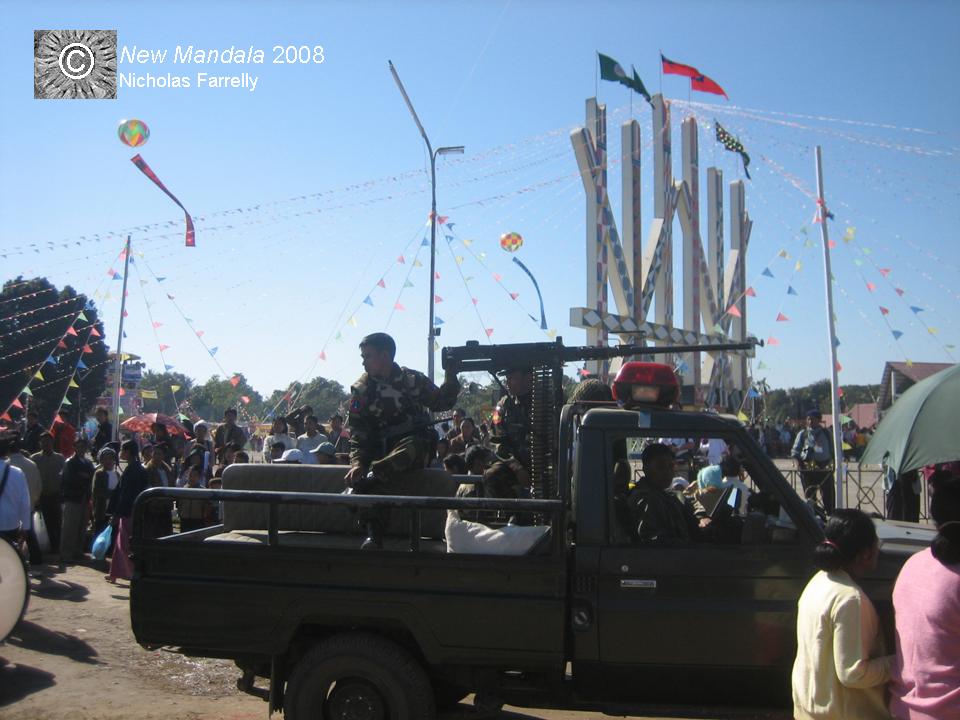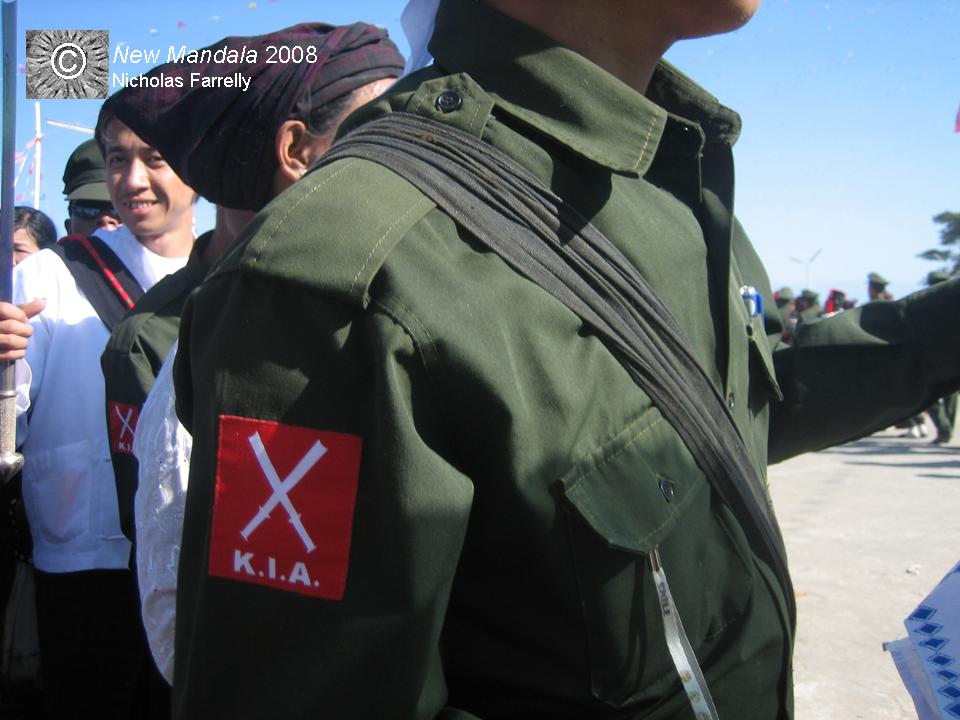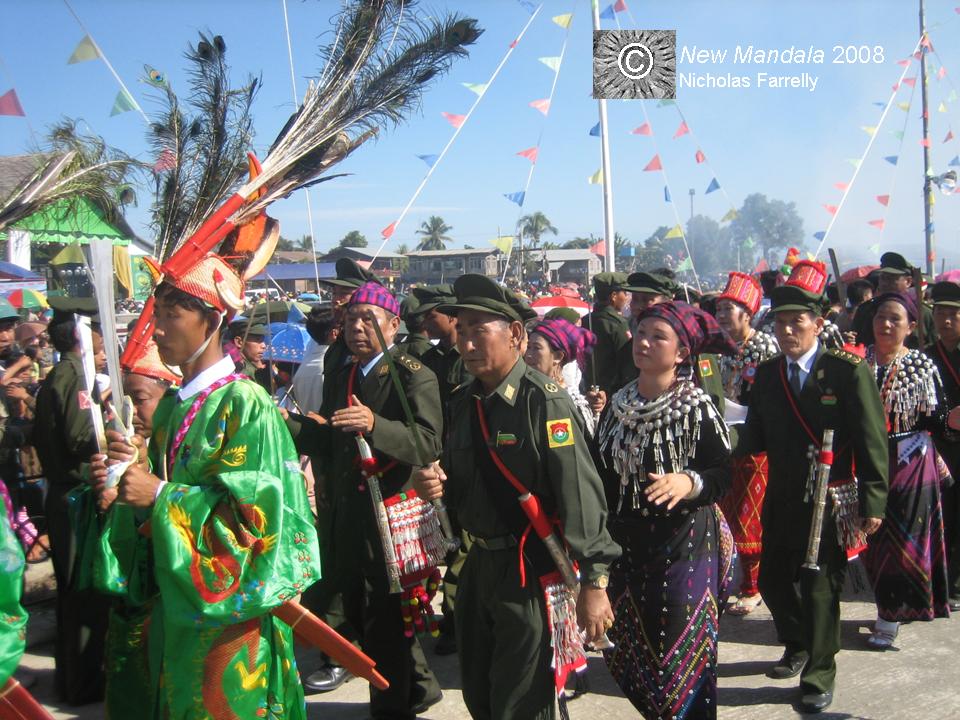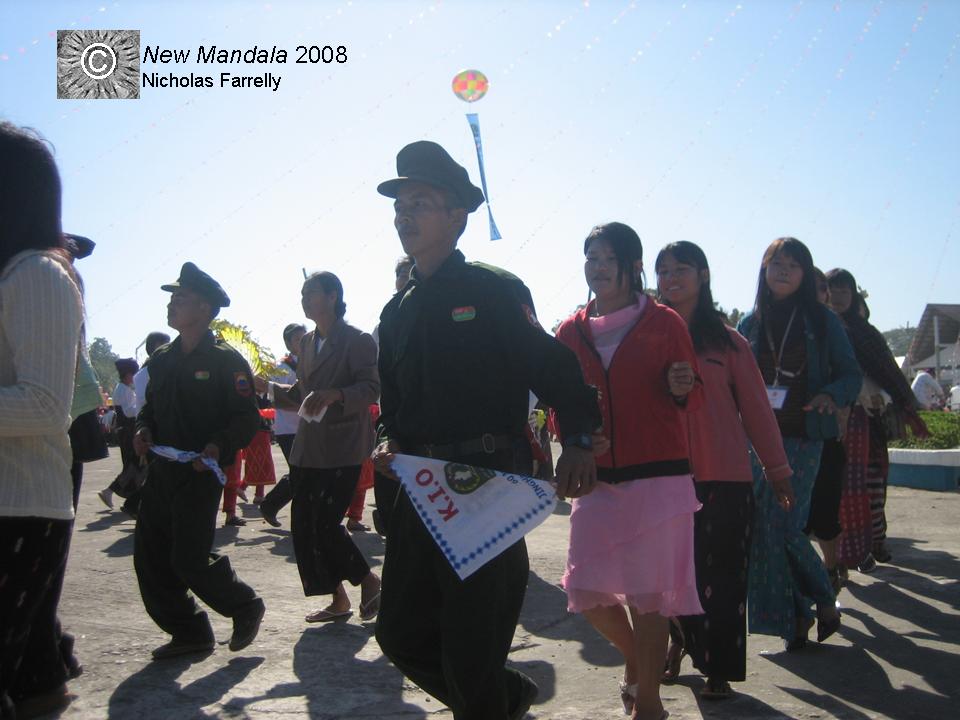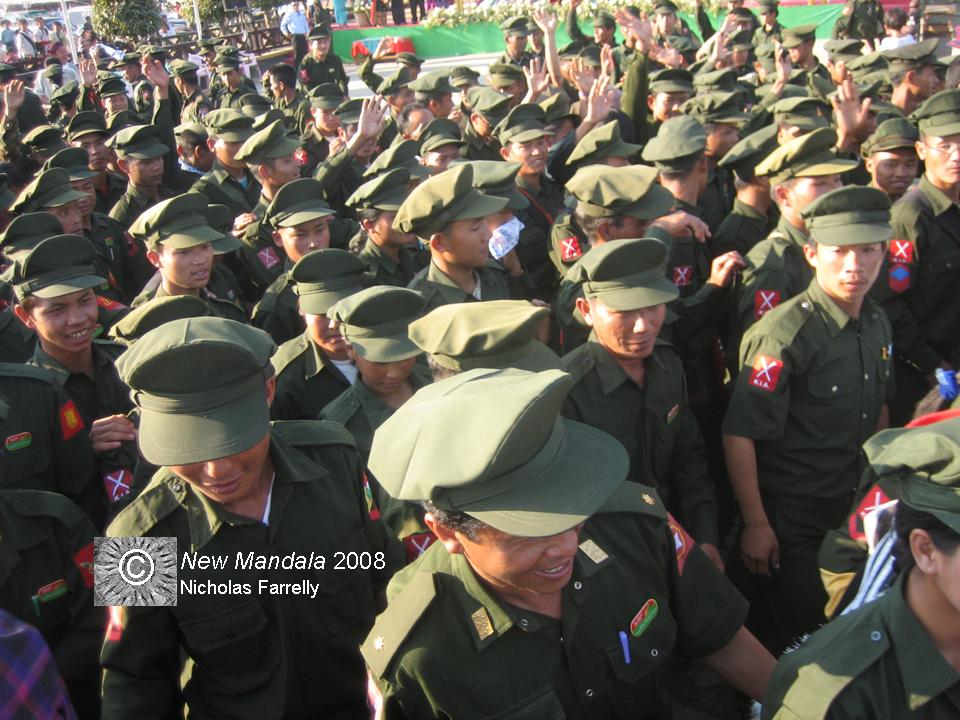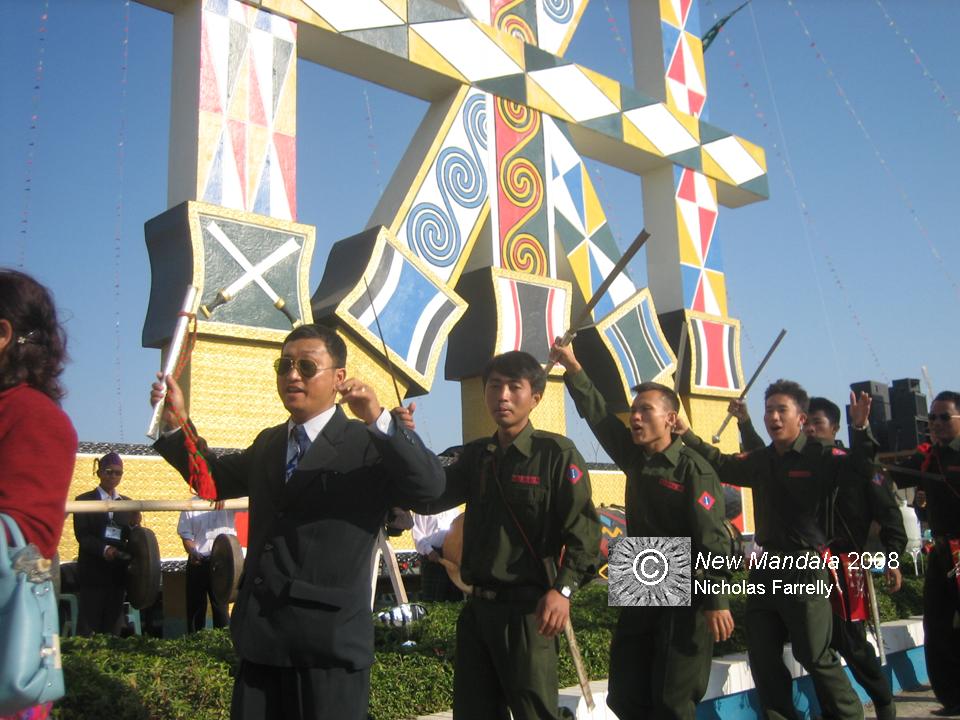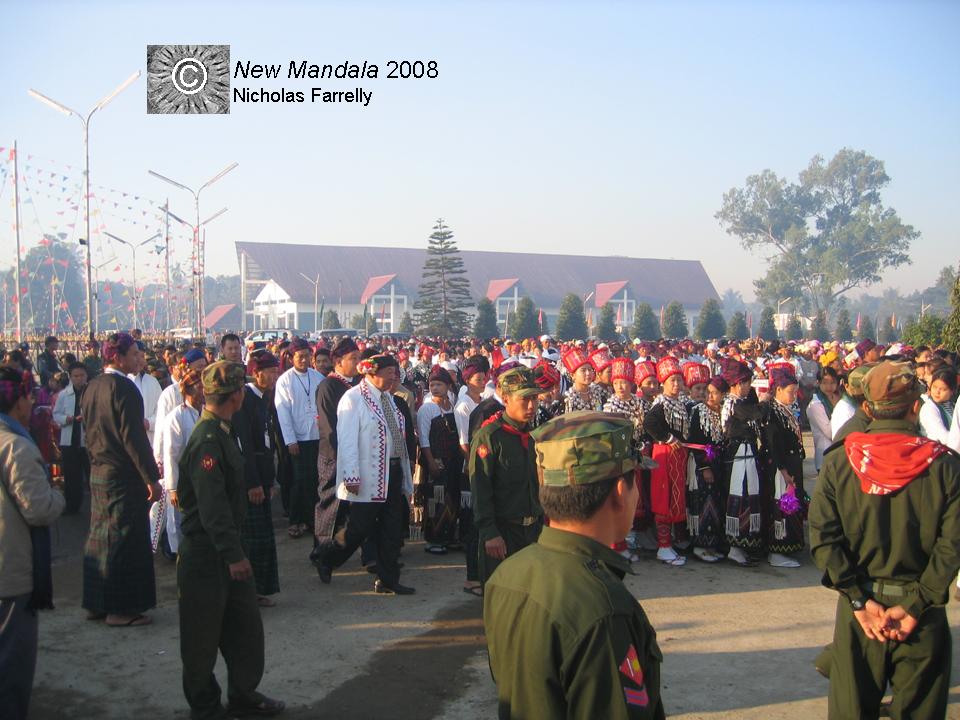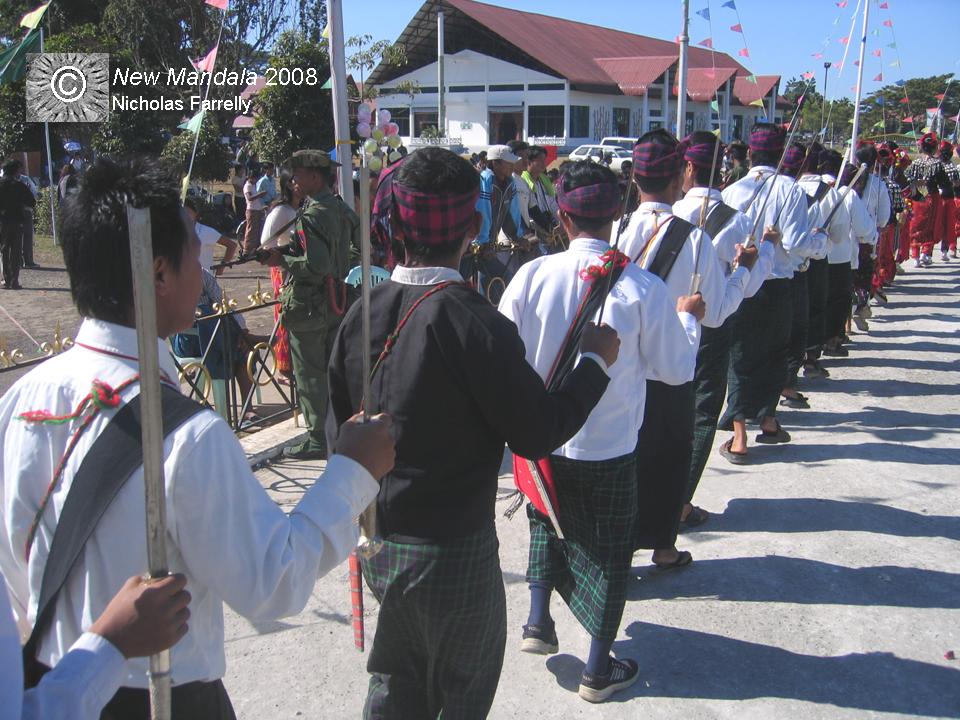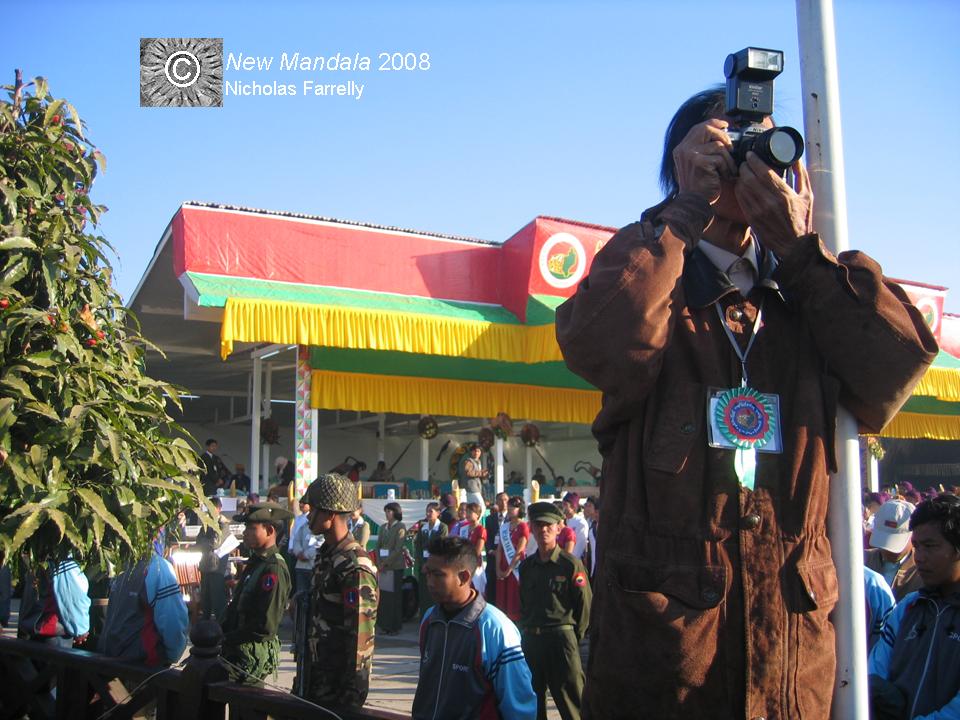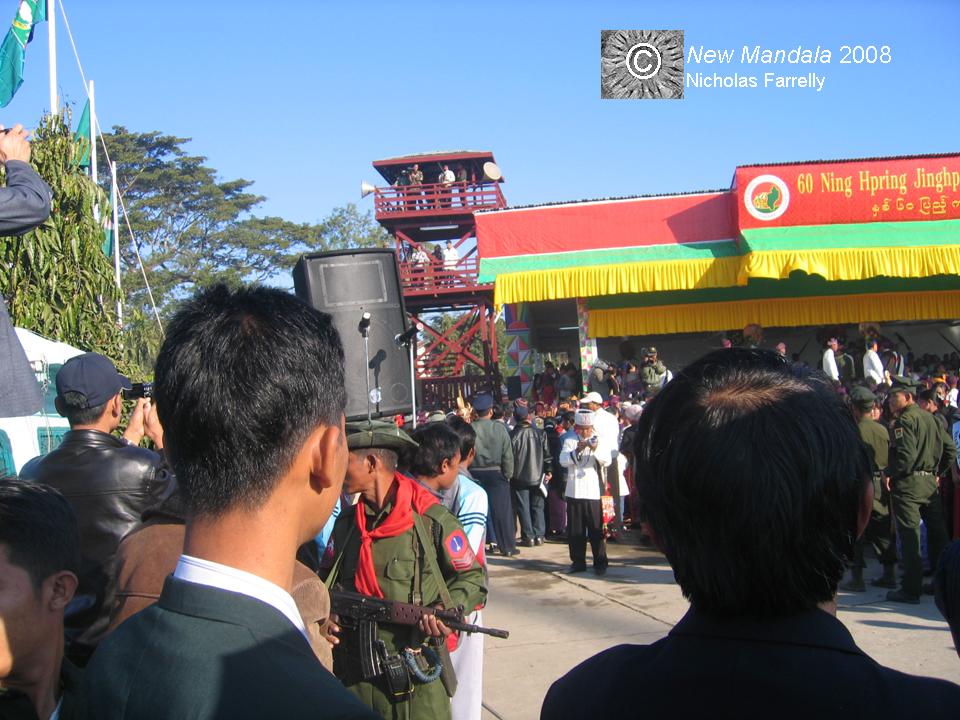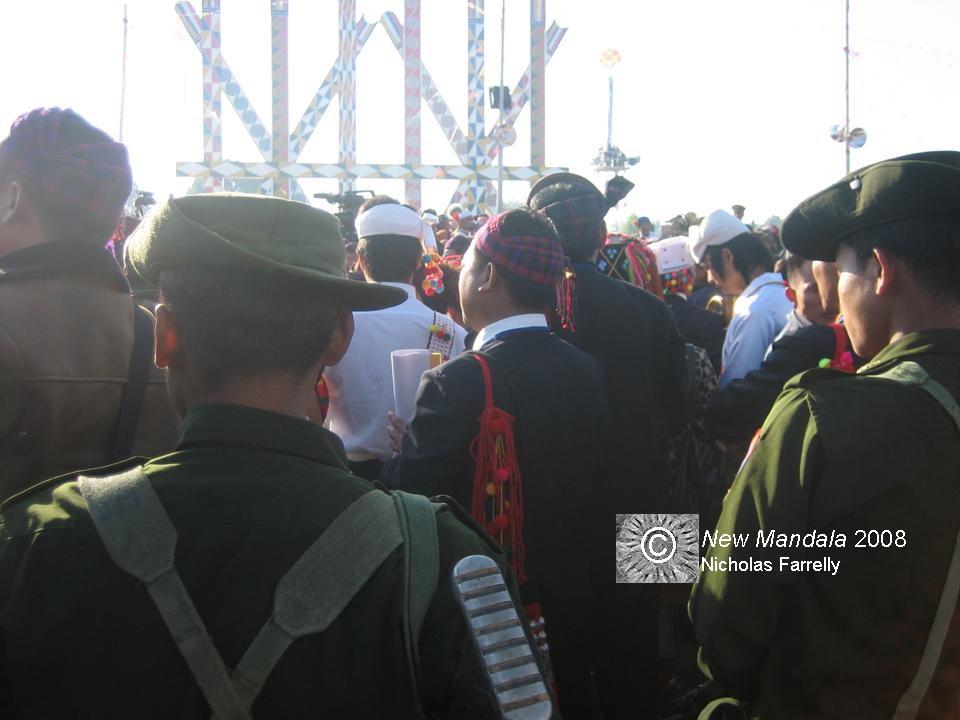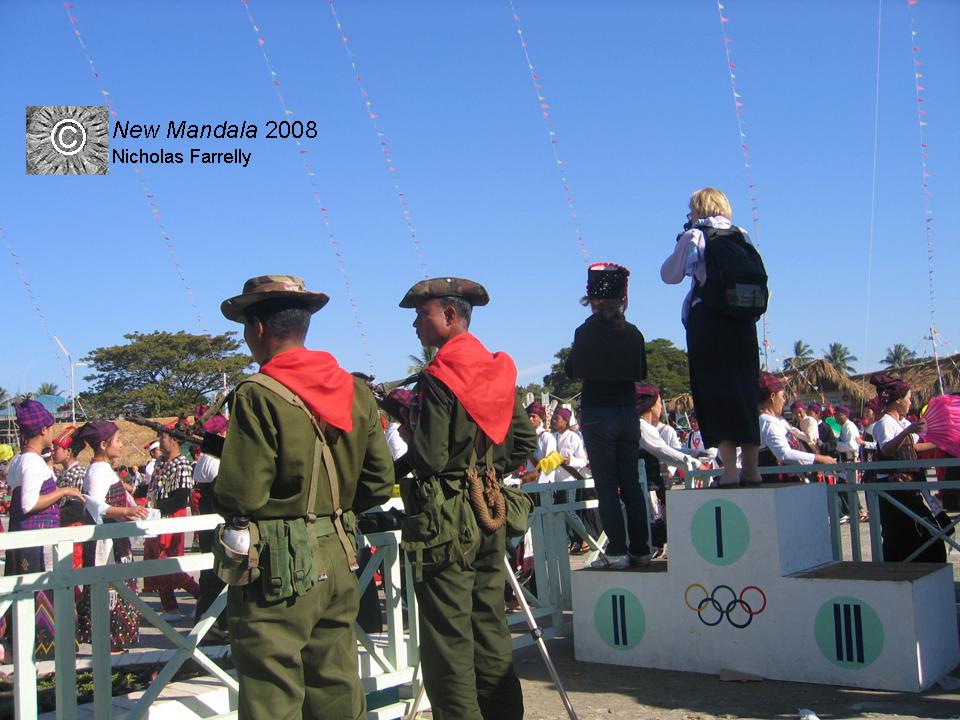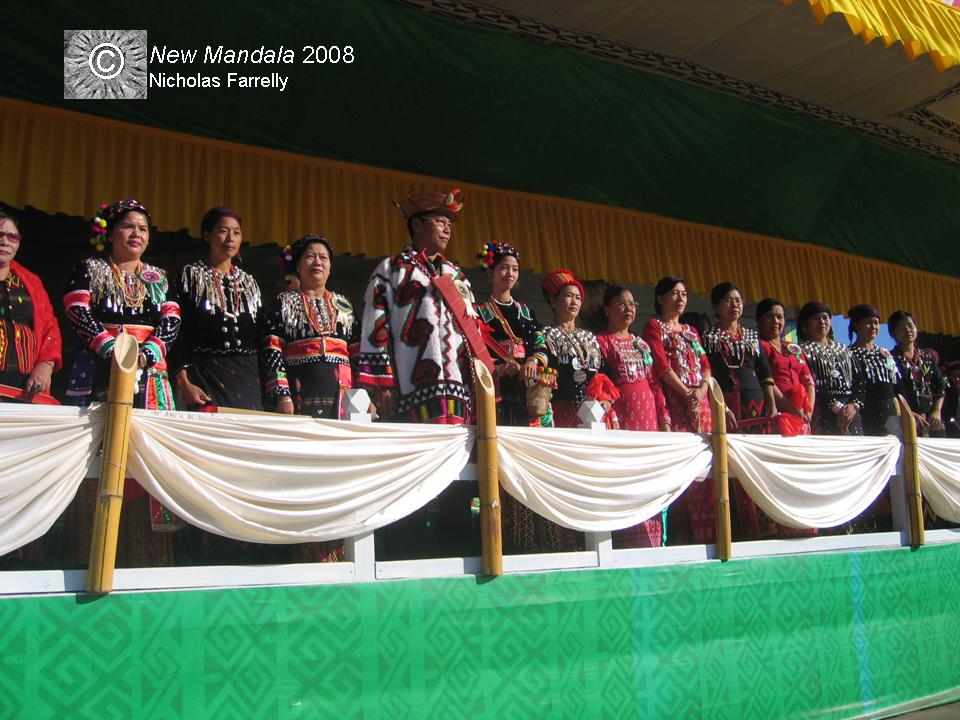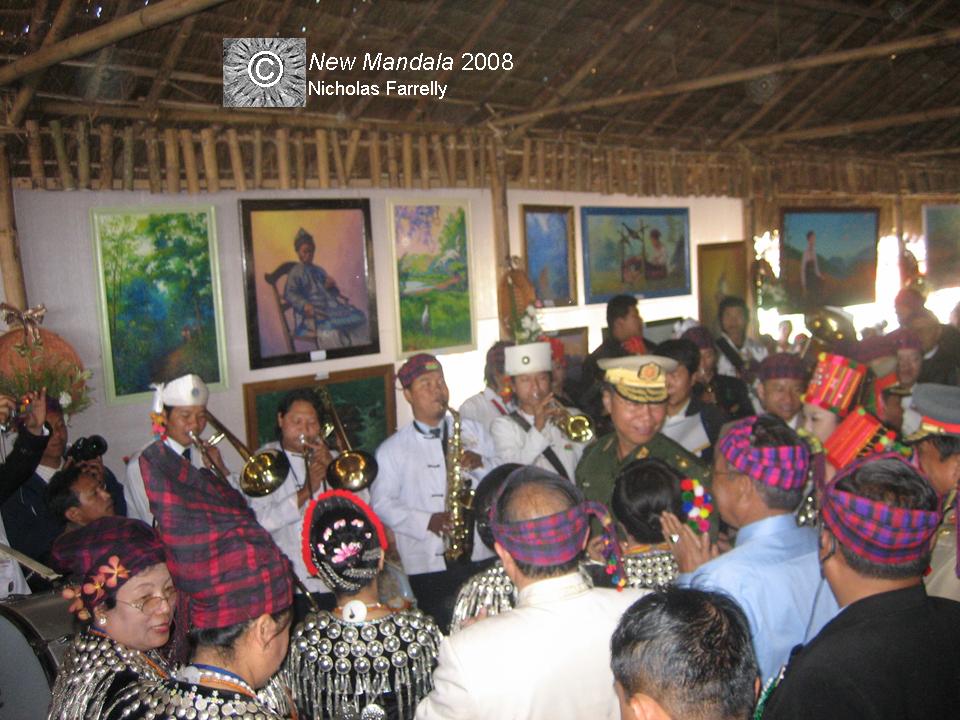– Burmese Army heavy machine gun. Part of the security detail that accompanied the Burmese Army’s Northern Commander to the Manau.
The Manau festival marking the 60th Anniversary of the Kachin State was a significant event for everyone who is jockeying to decide the future of northern Burma. Under the current ceasefires in the Kachin State this Manau festival was exceptional. It is rare to have each of the major Kachin armed groups in the state and the Burmese Army all together at the one event.
To begin the more substantial posts in my series on the recent Manau festival held in Myitkyina, Kachin State, I have put together some pictures that highlight the prominent roles of the various armed groups.
Armed groups – whether they wear government uniforms or have other allegiances – are a fact of life in northern Burma. This should not be taken to imply that every activity is dominated or defined by weapons. But the Myitkyina Manau was a special example that highlighted the ways that various armed groups (including the Burmese military government) seek to assert their position.
In this post I will present some images from the Manau festival. They highlight the presence of the Kachin Independence Army/Organization (KIA/O), the New Democratic Army – Kachin (NDA-K) and, of course, the Burmese tatmadaw. With the exception of the Burmese soldiers, most other troops that are pictured here are not carrying firearms.
Readers who are new to the politics of this region may find the pictures presented here somewhat bewildering. I have, for that reason, provided a number of links to relevant material that may help to clarify the history and context of each group that is on show.
Kachin Independence Army/Organisation
– The distinctive shoulder patch worn by Kachin Independence Army troops. The Lasang Awng Wa group, discussed in a previous post, still tends to wear what are basically KIA uniforms. This can create some initial confusion about which is the “mother army” and which is the “splinter group”.
– KIA/O leadership dancing in the middle of the day on 10 January 2008.
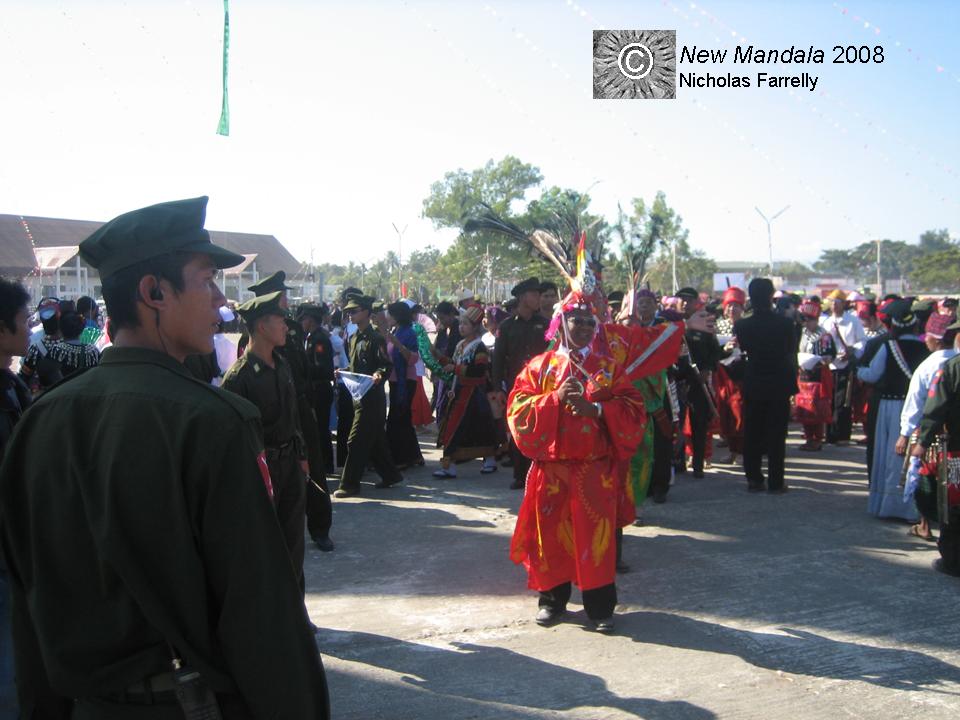
– Armed KIA bodyguards keep a careful eye on everyone as their commanders dance around the Manau poles.
– A KIA soldier dancing with a KIO scarf.
– Hundreds of Kachin soldiers prepare to depart the Manau festival for their base at Laiza. They are given an emotional good-bye from the huge Kachin crowd that assembled to see them off.
New Democratic Army – Kachin
– New Democratic Army – Kachin soldiers dancing in front of the Manau poles.
– NDA – K soldiers giving a cheer.
– The Chairman of the New Democratic Army – Kachin, Zahkung Ting Ying, flanked by bodyguards, makes his way to be greeted by some of Myitkyina’s senior business, cultural and political figures.
Burmese Army
– On the outer ring of the Manau ground a Burmese soldier eyes the small crowd.
– This picture takes in Burmese soldiers from the personal bodyguard of the Northern Commander and a number of men in the tracksuits worn by Union Solidarity and Development Association members. On the major Manau day, 10 January 2008, these men provided extra security for the Northern Commander and his delegation. Some appeared to be armed.
– The scene as the Northern Commander and other senior figures took their position on a stage. The tower in the background was used by Burmese soldiers throughout the Manau to keep a close watch on the crowds from above.
– Throughout the festival the Burmese military had a strong presence on the ground. It was only during the dance by the KIA/O that they appeared to evaporate.
– These Burmese troops were standing guard over the dancing on 10 January 2008. They are right in the middle of the the Manau ground. Up on the “Olympic” podium are two westerners snapping pictures.
– Burmese troops stationed right in front of the Manau poles, the most prominent symbol of Kachin unity and culture.
– Major-General Ohn Myint, Chairman of the Kachin State Peace and Development Council and Commander of the Burmese Armed Forces’ Northern Command, in chiefly regalia. He is surrounded by women from prominent Myitkyina families, including his own. He wore this “Kachin” jacket, sword and hat for about 30 minutes. He then reverted to his military uniform.
– Later in the day the Northern Commander visited the hospitality tent where a band played for his enjoyment. Although I failed to capture the moment for posterity he handed over a very large wad of kyat to the band-master to show his appreciation.
I have hundreds of other photographs that capture telling moments from the Manau festival. Over the next week I plan to post more of this material to New Mandala. It was a huge event and I cannot do justice to the diversity of happenings in just one or two posts. For that reason I am particularly happy to answer any questions from readers. If there are elements of the festival, or the wider Kachin context, that you would like to see clarified then please do not hesitate to post a comment.
 Facebook
Facebook  Twitter
Twitter  Soundcloud
Soundcloud  Youtube
Youtube  Rss
Rss 